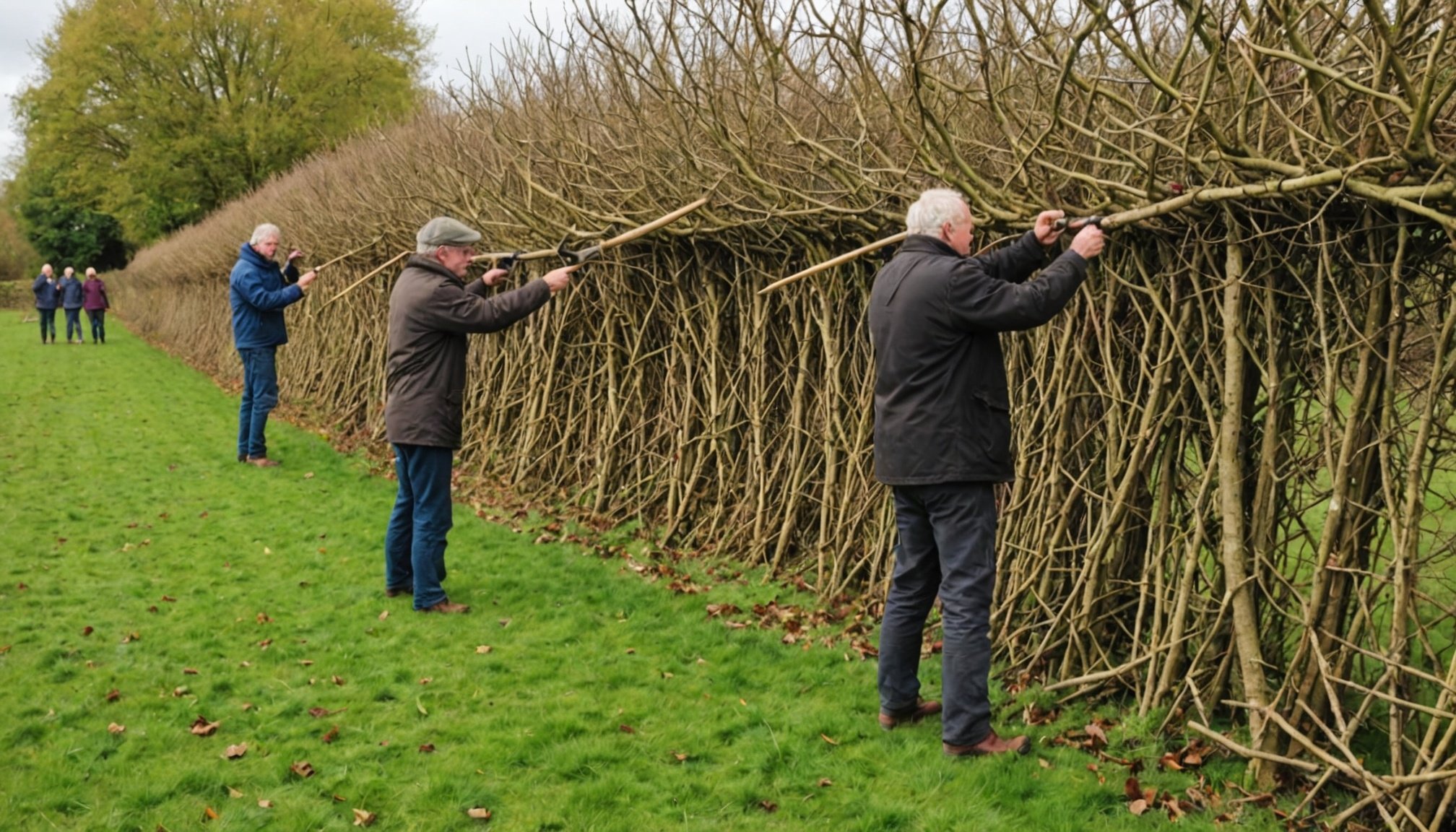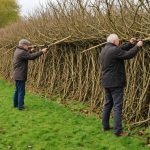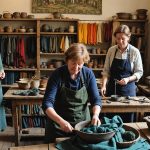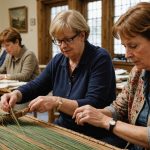Overview of Traditional English Hedgelaying Techniques
Traditional English hedgelaying is an ancient craft that has stood the test of time, not only as an agricultural practice but as a cultural treasure in the UK. This technique involves the careful cutting and weaving of shrubs and trees to create living fences, promoting healthier woods and vibrant ecosystems. Hedgelaying techniques have evolved over centuries, adapting to regional landscapes and farming needs while preserving their rustic appeal.
The history of hedgelaying traces centuries back, embodying agricultural resilience and conservation. Originally, this technique served to protect livestock and delineate property, evolving as land-use strategies and environmental appreciation grew. Each style, from the laid-back Midlands bullock hedge to the neat South of England approach, reflects the landscape’s cultural nuances.
This might interest you : Discover the Charm of London”s Historic East End: Join a Guided Walking Tour of Its Iconic Markets!
Numerous styles underscore the diversity within hedgelaying techniques. The Midlands style, for example, uses a double brush, creating a sturdy, stock-proof hedge. Conversely, the Devon style features steep angles and is tailored for better wind resistance. Whether it’s the intricacy of the Welsh borders or the durability of Northern Ireland’s hedgerows, every technique displays unique functionality and aesthetic. Understanding these variations not only preserves cultural heritage but also enhances ecological harmony.
Recommended Locations for Learning Hedgelaying
Finding the best places to learn hedgelaying can significantly enhance your skills in this traditional craft. Here are some top recommendations:
In the same genre : Discovering London”s Fashion Heritage: Top Spots to Unravel British Style History
Location 1: Cotswold Hedgelaying School
The Cotswold Hedgelaying School offers comprehensive courses in traditional hedgelaying techniques. Their curriculum covers various styles and methods, accommodating both beginners and experienced practitioners. The school’s facilities include well-maintained practice areas and specialized tools, providing an immersive learning environment. Previous participants commend the hands-on approach and personalized instruction, making it a standout option for dedicated learners.
Location 2: Yorkshire Hedgelaying Workshop
Yorkshire Hedgelaying Workshop is known for its specialized training in regional hedgelaying techniques. The instructors are experienced professionals with rich local expertise. Detailed lessons on advanced methods are a highlight here. Scheduling is flexible, with courses available throughout the year. Costs are competitive, reflecting the workshop’s commitment to accessibility and quality.
Location 3: Somerset Rural Training Centre
The Somerset Rural Training Centre focuses on unique features of training programs, such as wildlife conservation through hedgelaying. Students enjoy a blend of classroom instruction and field practice, ensuring a well-rounded experience. Practical elements are emphasized, with opportunities to manage real hedges. Feedback from alumni frequently praises the life-like training scenarios and the supportive community.
Practical Information for Aspiring Hedgelayers
Embarking on a hedgelaying course can be both enriching and practical. Understanding the typical costs associated with these courses is crucial for budgeting. On average, hedgelaying classes range from £100 to £300 for a standard one or two-day workshop. This fee generally covers expert instruction, materials, and often includes some equipment usage. However, it’s wise to verify with the provider what specific materials or tools you’ll need to bring yourself. Participants are typically advised to wear durable clothing and sturdy boots, and to bring personal protective equipment such as gloves.
Courses are scheduled throughout the year, aligning with the hedgelaying season from autumn to early spring. Check in advance for hedgelaying workshop dates that fit your schedule. Given that these workshops can fill up quickly, prompt booking is advisable.
For those concerned about the financial aspect, exploring scholarships or funding options is worthwhile. Some organisations and local councils offer financial aid to support attendees, given the craft’s environmental benefits. Researching these opportunities could make participation more accessible. As with all courses, precise details may vary, so direct inquiries to course providers are recommended for the most accurate and up-to-date information.
Visual Insights into Traditional Hedgelaying Techniques
Images play a vital role in understanding the intricacies of hedgelaying techniques. Pictures reveal the art and skill involved, offering a visual guide that’s particularly helpful for beginners. Whether scrutinising the angle of cuts or the flow of branches, hedgelaying visuals provide a practical illustration of the process.
Photographic Documentation of Techniques
A curated gallery of images captures hedgelaying in action. These photographs not only exhibit the detailed steps involved but also showcase the variety of techniques depending on regional styles. By analysing the methods shown, viewers gain a deeper appreciation and understanding of the craft’s nuances. Visuals enhance learning by offering a tangible reference point, making complex techniques more accessible.
Instructional Videos and Tutorials
Instructional videos on hedgelaying provide learners with dynamic content that text alone cannot convey. Viewers can witness the entire process, from selecting the right tools to the final touches. With recommendations for additional resources, these videos establish a foundation for further exploration. As a learning tool, video is invaluable due to its ability to demonstrate real-time techniques and provide feedback through visual cues, significantly enriching the learning experience.
Expert Insights and Personal Experiences
Hedgelaying, a timeless craft, thrives on its blend of expertise and community spirit. Expert opinions on hedgelaying highlight the unique techniques honed over years. Seasoned hedgelayers often share that one must be patient and nurturing, as shaping a hedge is akin to guiding a living organism. This understanding is pivotal for any learner entering the craft.
Personal stories from learners underscore the allure of hedgelaying. Many are drawn to it not just for skills but for what it represents—a connection to nature and a sense of accomplishment. One learner’s journey involved initial challenges, like mastering the billhook, but the satisfaction of crafting a living barrier was immensely rewarding.
Testimonials from instructors often emphasize community’s role in keeping the craft alive. Traditionally, these gatherings served as more than just a learning ground; they were hubs of camaraderie. Such environments foster support and ignite passion in learners.
The importance of community cannot be stressed enough. It is through shared laughter, struggles, and successes that individuals grow in their understanding and appreciation of hedgelaying. This communal bond ensures the intricate art continues to thrive and adapt, all while respecting its storied past.









